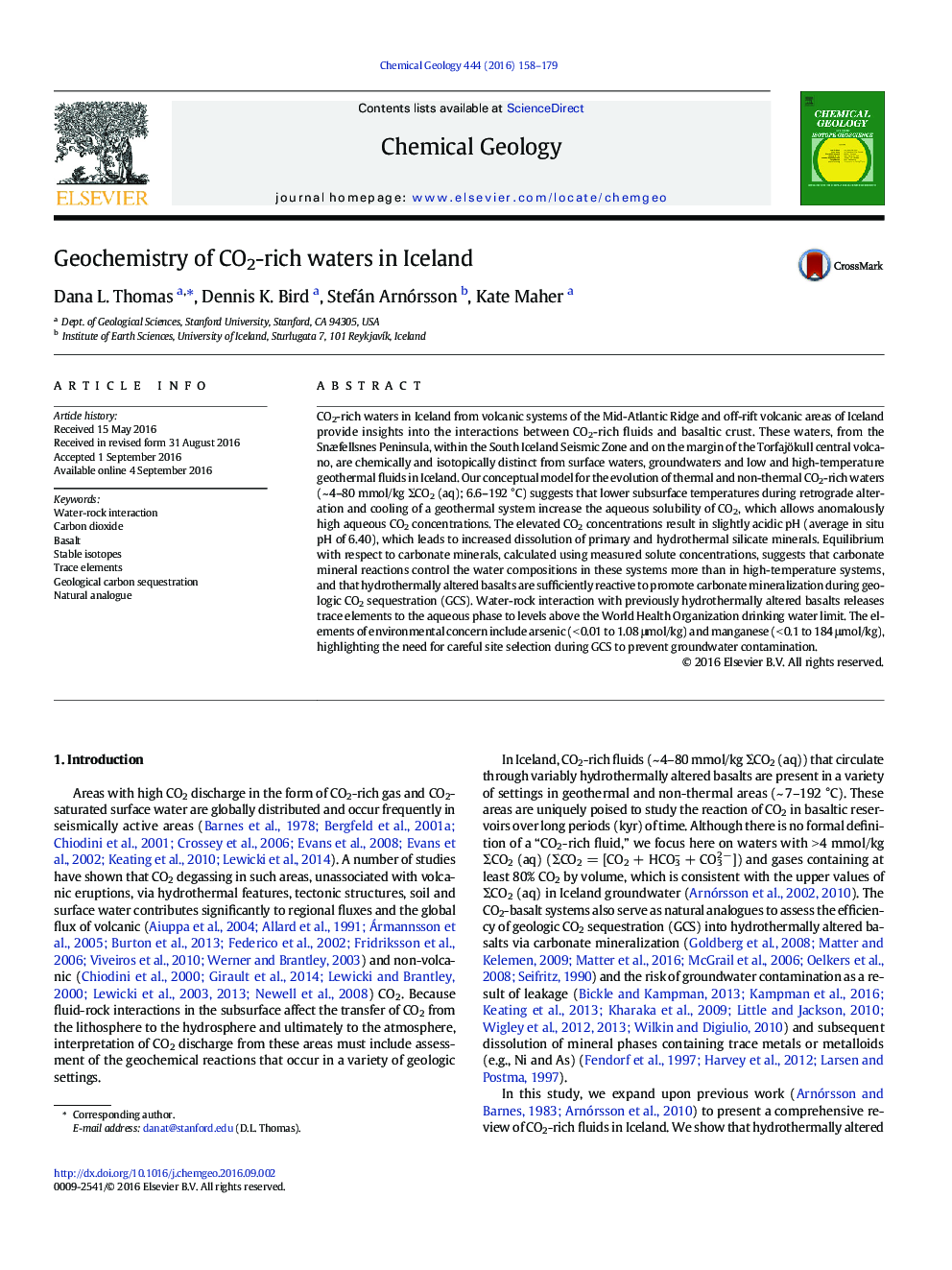| Article ID | Journal | Published Year | Pages | File Type |
|---|---|---|---|---|
| 4698178 | Chemical Geology | 2016 | 22 Pages |
CO2-rich waters in Iceland from volcanic systems of the Mid-Atlantic Ridge and off-rift volcanic areas of Iceland provide insights into the interactions between CO2-rich fluids and basaltic crust. These waters, from the Snæfellsnes Peninsula, within the South Iceland Seismic Zone and on the margin of the Torfajökull central volcano, are chemically and isotopically distinct from surface waters, groundwaters and low and high-temperature geothermal fluids in Iceland. Our conceptual model for the evolution of thermal and non-thermal CO2-rich waters (~ 4–80 mmol/kg ΣCO2 (aq); 6.6–192 °C) suggests that lower subsurface temperatures during retrograde alteration and cooling of a geothermal system increase the aqueous solubility of CO2, which allows anomalously high aqueous CO2 concentrations. The elevated CO2 concentrations result in slightly acidic pH (average in situ pH of 6.40), which leads to increased dissolution of primary and hydrothermal silicate minerals. Equilibrium with respect to carbonate minerals, calculated using measured solute concentrations, suggests that carbonate mineral reactions control the water compositions in these systems more than in high-temperature systems, and that hydrothermally altered basalts are sufficiently reactive to promote carbonate mineralization during geologic CO2 sequestration (GCS). Water-rock interaction with previously hydrothermally altered basalts releases trace elements to the aqueous phase to levels above the World Health Organization drinking water limit. The elements of environmental concern include arsenic (< 0.01 to 1.08 μmol/kg) and manganese (< 0.1 to 184 μmol/kg), highlighting the need for careful site selection during GCS to prevent groundwater contamination.
